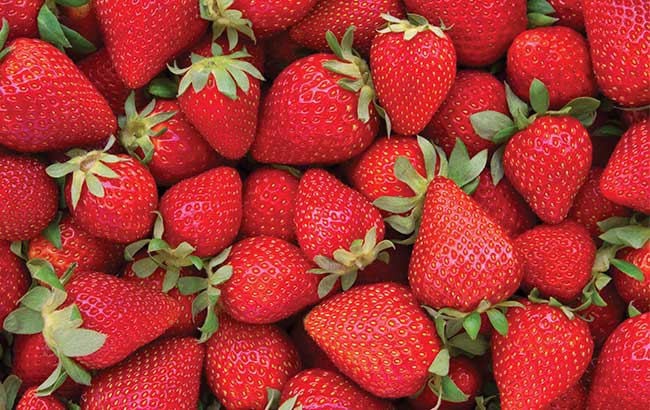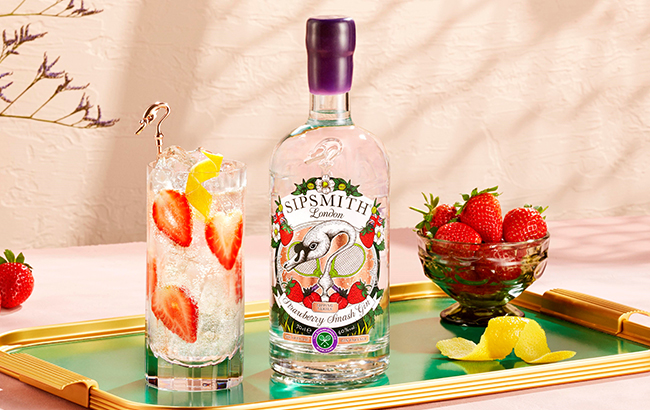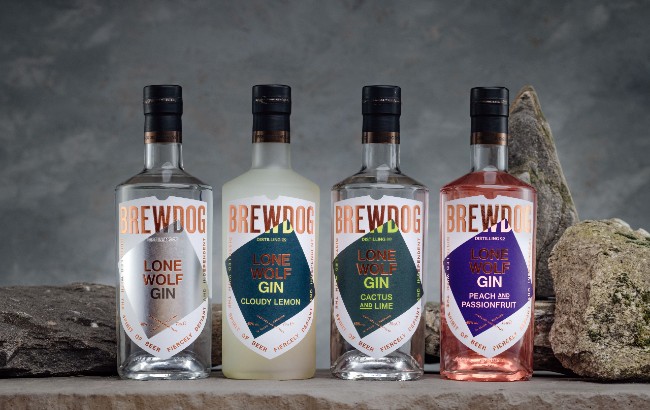Does the flavoured gin trend have staying power?
Flavoured gins have become increasingly popular as consumers look to widen their taste experiences. But are the products on offer here to stay, and how will this section of the market develop?

*This feature was originally published in the December 2021 issue of The Spirits Business magazine.
There was a time, not long ago, when it seemed every new gin was about its place of origin – every corner of every country, county and town was getting a gin of its own, optionally made with local ingredients. Nowadays, it’s all about flavour. New launches, from the smallest of craft distillers to the biggest of drinks companies, are invariably named for a headline botanical or two, and sometimes dyed a corresponding colour.
There’s an argument, of course, that all gin is flavoured, and another that flavoured gins are not a recent phenomenon. But something’s happening in the gin category, judging by the constant stream of new variants, whether based on berries, citrus, coffee, or anything else you can think of.
Neil Mowat, brand director for Ian Macleod Distillers, with Edinburgh Gin in its portfolio, believes this is an inherent characteristic of the category. “Flavoured gins are not new, and are fundamentally driven by a consumer‐led demand for products that build on gin’s core credentials,” he says.
“At their heart, these involve the creative application and blending of flavours to deliver new, exciting and original recipes – this is fundamental to what gin is and what drives its contemporary appeal.”
Meanwhile, Portobello Road Gin co‐founder and master distiller Jake Burger says: “I think ‘flavoured gin’ is a terrible tautology, and we really need to come up with a better name for the category.” He also raises the question of whether some of the products on the market deserve to be called gin at all. “Some of them are very tasty liquids, but I do believe that only a handful of the good ones are junipery enough to truly be considered gins, if we take the definition of ‘juniper being the predominant flavour’ as our benchmark for what qualifies.”
There are producers that are mindful of this definition though. “We make our gins using an abundance of juniper, and that juniper backbone is not lost when we layer different botanicals on top,” says Steven Kersley, director of distilling operations at Brewdog Distilling Co.
“It’s about being able to adapt with London Dry. It’s a very interesting thing to do,” says Sipsmith’s liquid innovations manager Ciarán Russell. “Being able to create something with juniper at the forefront, but pairing it with other botanicals, like black cardamom and coffee… making sure it’s still London Dry while giving it that big burst of flavour is the difficult part, but it’s the fun part too.”

Gin has long faced thorny issues such as these when it comes to definitions, but whatever you call them, gins with additional flavours are booming. The number of product launches suggests gin brands are on board, and the sales figures confirm consumers are definitely into these, at least at the moment. IWSR Drinks Market Analysis defines a flavoured gin as any high‐strength gin that has additional flavouring, including pink gins.
It offers ample evidence that there’s demand for the category. While global gin volume declined by 3% last year, after more than 8% growth in 2019, the flavoured segment grew by 6% in 2020, and 24% in 2019. The number one global market for flavoured gin is the UK, growing by 18% in 2020.
The recent wave can arguably be traced back to the influx of pink gins by what seemed like every gin distiller a few years ago. “I don’t think consumers were asking for their gin to be sweeter, pinker and fruitier before these products came along – but once those pioneer products did arrive, the expansion of the category was certainly driven by consumer demand, and perhaps a little by fear,” says Burger. “Gin brands saw the phenomenal sales of these products and perhaps saw that they weren’t stealing market share from the non‐gin spirit categories but were stealing at least some of this volume from London Dry gin.”
Success story
Some maintain that the flavoured element of the category has been critical to gin’s success.
“Innovation has certainly played a huge role in maintaining gin’s growth in the last decade, and flavoured gin has been perhaps the biggest innovation success story in gin in recent years, piquing people’s interest in both the spirits aisle and at the bar,” says Russell Kirkham, customer marketing director for Quintessential Brands. With brands such as Bloom, Opihr and Greenall’s, Quintessential has embraced the flavoured and coloured gin trend.
For its proponents, flavoured gin not only helps to keep gin interesting, but brings new consumers into the category too. Charlotte Gibbon, head of consumer and shopper planning for Diageo, says they appeal to two types of consumers: “Existing gin drinkers who want to try something new, and new consumers who are recruited to gin as a result of the choices now available.”
It is a trend driven not only by distillers, but by consumers too, it seems. Sipsmith’s Russell shares this view. “Consumers love new things. They’ll try a lemon gin one week, then there’s a new orange flavour. They’ll keep jumping as soon as a new one comes out,” he says. “But the creativity behind gin brands and distillers is driving it as well. I have a job because of it.”
While it seems that there’s hardly a gin distiller that hasn’t embraced the flavoured category, the subject of colour remains more controversial. For some, it’s an essential tool for standing out on a shelf, while others are more wary.
“Diageo’s research shows that colour is important to help consumers understand that the product has additional flavour, and therefore helps to signpost these differentiated profiles when comparing it with London Dry,” says Gibbon.
58 Gin’s commercial manager, Dylan Bell, agrees. “Crystal‐clear flavoured gin struggles to translate on the shelf in a retail setting, and therefore colour is important to emphasise the flavour element.”
Most agree, however, that colour is best used when it’s relevant to flavour, and can be detrimental when it isn’t. “At times, colour can be crucial in terms of translating the flavour,” says Kersley, whose Lone Wolf Cloudy Lemon Gin is indeed cloudy, and a pale, lemon colour.
“However, unauthentic colouring that isn’t representative of the ingredients used to make the gin can be off‐putting to consumers.”

Sipsmith’s Russell agrees: “If you have a gin that’s flavoured – not artificially but with a natural ingredient – that works as long as the base liquid pairs with that colour. The colour can’t create the flavour. It can only boost it.”
That said, with one exception, Sipsmith doesn’t colour its flavoured gins. “It comes back to our ethos as a company. We wanted to be the pioneers of London Dry gin, so all our gins, aside from Zesty Orange where the flavour comes from orange afterwards, are London Dry. Jared [Brown, Sipsmith master distiller] has always been very traditionalist and purist in that sense,” he explains.
Mowat at Ian Macleod is wary of the opposite approach. “Adding colour, or sparkles, for effect only is far more fad‐like,” he says. “These consumers are less motivated by product credentials than they are by more superficial elements, and are likely to move on to the next fad when it comes along.”
Quintessential’s Kirkham puts it simply: “Colour helps to attract consumers from a marketing perspective, but in terms of the product’s quality, the colour does not have any impact at all.”
More generally, Kirkham is practical about the appeal of flavoured gin. “The appetite is still there, however the need to provide something new to maintain excitement means that the life cycle of flavoured gins isn’t always long, and so SKUs will need to earn their place more than they used to,” he says.
That’s likely the reason why consumers are already looking elsewhere too, with signs of a resurgence in flavoured vodka. “It’s clearly making a return and tapping into the flavoured, coloured gin boom of recent years,” says 58 Gin’s Bell.
“It will be interesting to see how this category develops, particularly if the flavours or fruit come from sustainable sources or highlight waste or surplus ingredients in supply chains.”
Brewdog is placing its bets on both flavoured gin and vodka. “We believe that flavoured vodka has already started to make a return,” says Kersley, who recently unveiled the company’s Seven Day Vodka range, complete with three flavours.
Georgie Snell, trade PR manager for Halewood Artisanal Spirits, agrees, referring to the success of flavoured variants for its Whitley Neill Gin as well as JJ Whitley Vodka. “We’re certainly seeing the popularity of flavours transfer to the vodka category as well,” she says, citing Nielsen figures that show flavoured vodka is now the fastest‐growing spirit category, and that JJ Whitley is the number one product range contributing to that growth. “We are also now starting to see more shopper experimentation and interest in flavours in other categories, such as rum,” she adds. The current fever for flavours does indeed look like it’s ready to extend even further.
“This interest isn’t exclusive to gin – we’re also seeing growth and consumer excitement around flavour across vodka, rum and whisky,” confirms Gibbon at Diageo.
Gin has seen so many changes in recent years, it’s tricky to predict what the near future holds – whether it’s renewed interest in London Dry, yet more flavours, or a move to other flavoured spirits instead.
Related news
The Botanist Distiller's Strength launches in UK
